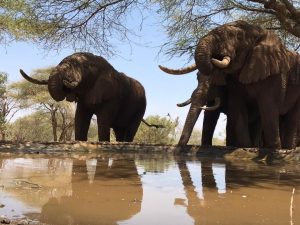The success of your marketing strategy depends on the nature of your content. If your content is good and by good I mean straight out of the top drawer, it will bolster your marketing efforts. On the other hand, if it is fairly ordinary, your inbound marketing campaign will fall apart faster than you realize.
Content converts. Good content converts better. Content creation is key in moving your customer from interest to taking a desired action. When you are successful in getting a potential lead to your landing page, it is the content on that page that will eventually determine whether the lead will convert. As much as 96% of visitors on your site are not there to buy. So to convert even a fraction of this number is an important task that can be achieved by awesome content on the site.
Here are seven steps that will take you closer to your goal:
1. Brainstorming a.k.a Idealization
The first step is to gather ideas for your content. While this step might sound like a no-brainier, it is imperative you follow a structured idealization process to get your hands on the right ideas.
Preparation
The groundwork for an epic post needs to be laid over the course of many days, even weeks. In order to prepare for the idealization process, you must ask your team to have a handle on the pulse of your target audience and niche at all times. This can only happen if you and your content team keep abreast of the latest happenings in the niche. Follow thought leaders, keep track of the latest news, trawl through discussion forums, and hunt on social media; basically make every attempt to know all developments in your domain and the kind of information your target audience is looking for.
Draft ideas
On the basis of your preparation, make a list of ideas that are perfect for coming up with exhaustive content relevant to your niche. They’re plenty of tools you can use to zero in on ideas you think will work for your audience.
Curate ideas
Say you have come up with a list of ten ideas that you feel worthy of follow up. Excellent! Now you need to curate these, to focus on only those ideas you are pretty sure will translate into a fantastic piece of content.
Finalize ideas
Once you are done with ideas curation, you’ll be left with 3-4 ideas that have epic content written all over them. Pick one and save all others in your ideas bank for future reference and use.
2. Research
You have to tap into various sources to get your hands on the facts and figures you’re looking for, that will help you support the points you’ll be making in the content piece. Surveys, info graphics, podcasts, videos, news sites, forums, magazines etc. are ideal sources for research.
This helps you look at research through the ‘idea prism’. It allows you to focus and gives direction to your research.
Collate this research, and make it easily accessible and consumable.
3. Define content format
Once you are done, identify the content format that will help you maximize potential of your content ideas, associated research, and understanding of the topic. Also, choose the format keeping audience preferences in mind and whether the format will allow you to do full justice to your idea.
There are two aspects of choosing the right content format that you need to consider. The first is your comfort factor with the format, for e.g. if you’ve chosen to create an info graphic, you must be able to create one with very little difficulty.
Second, you need to identify content formats that have proven efficacy backing them up. Think of it as a fine balancing act you must perform keeping different variables in mind.
4. Defining content structure
This is one of the mission critical steps of the process. You must create a content wire-frame that lists all important points you want to cover and also their flow. This ensures you don’t forget mentioning anything that is absolutely crucial for making an impression on the target audience. While creating the structure of your content, keep your research in mind and make key data a part of this wire-frame. Again, this guarantees you don’t leave any important bit out of your content.
The structure of your content depends on the format you pick. The structure of a blog post will be markedly different from that of a video.
5. The brass tacks – creation
Whether it’s a blog post, an info graphic, a video or something else, you should come up with attention-grabbing titles for your content piece. Your titles must be click-worthy and searchable; this sets the stage for content virality.
Short, focused titles work big time; they must lay out the content’s deliverables clearly. Users must know how taking a look at your content will benefit them.
Once, you’ve got the title out of the way, start the actual process of content creation. This content must justify the title you’ve come up with.
You already have a structure; the broad contours of the content are already in place. All you need to do is start fleshing out the pointers. Fill in the details.
Let’s say you want to write a blog post. The idea is to think of your post as a project and break it down into small, achievable milestones. Build your post, word by word, sentence by sentence and paragraph by paragraph. Think of each pointer you want to flesh out in the article as a separate task. This way, you not only will do justice to each and every pointer but also not get overwhelmed with the job on hand.
Something else you must keep in mind is that EPIC content should be written with confidence. The reader must believe that the writer knows what he/she is talking about. A confident and assertive article backed by the writer’s strength of conviction, real world examples and data citations from reputed sources, is infused with credibility. This is the kind of write up readers trust, gain from and share with their friends and followers.
The basic process for content creation remains true for all formats. The whole idea is to make valid arguments in support of your opinion on suggestions made in your content.
6. Testing
The next step is to test your content. Make sure people who are invested in its success take a good look at it. It’s important to get their feedback and make suggested improvements. Prepare a questionnaire for these “testers” and ask them to fill it once they are done going through your content. Ask them whether:
- The content was readable.
- The user flow was spot on.
- They understood the points you were trying to make.
- The content went off-kilter at any point of time.
- This content added value.
- They will share this content with their friends and followers.
- There was something about the content they didn’t like.
You get the drift. Ask questions that will give you a very clear idea about the effectiveness of your content and help make changes to it if you’ve got negative feedback about certain portions.
7. Refine
The final step in the process is to just look away from the content piece for some time. Wait for a day or two and take a look at it again.
Can you improve it further?
Remember, you’ve already made the changes that people suggested you make. But you still might come across a sentence or two that you want to change or add a source that you believe substantiates a point you’ve made.
Keep refining the article until you are absolutely sure it is perfect and meets the standards demanded by EPIC content.

That’s it. Done! What you have in front of you now is content that will make your brand proud. It’s the kind of content that is EPIC in every sense of the word!
Grab your FREEBIE here ⇒ https://goo.gl/tt2JHd
Source:
Oktopost.com
Jeffbullas.com



